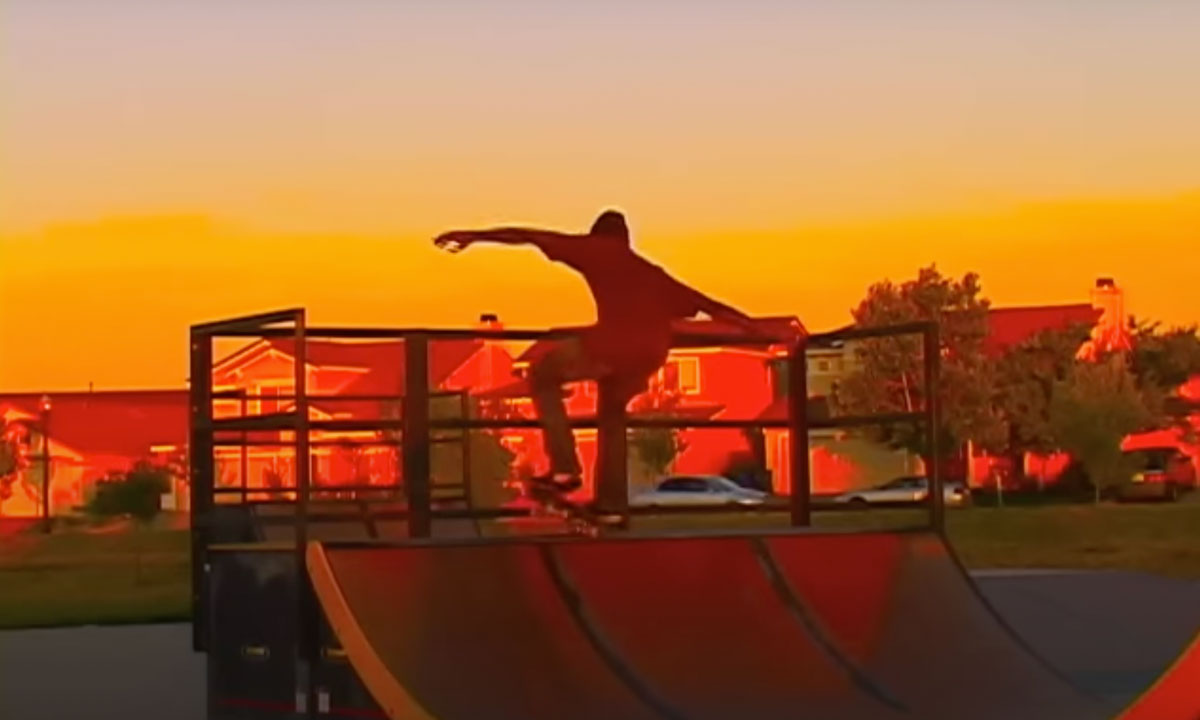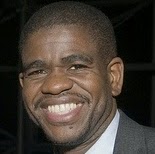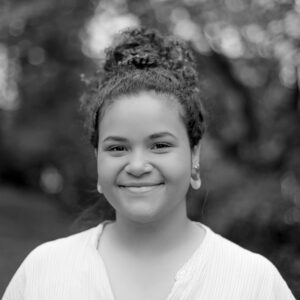How Educators Can Help Kids Make Sense of Tyre Nichols’s Death
Facing History & Ourselves’s Dimitry Anselme on how teachers can address Nichols’s death in the classroom while affirming students’ grief & anger

At dinner with their families, on school buses and in their own rooms, young people nationwide have witnessed the brutal killing of Tyre Nichols, whether they meant to or not.
As students enter classrooms in the days after a widely publicized funeral in Memphis, experts say educators have a responsibility to acknowledge their anger, grief and sadness — particularly as more than ever before experience symptoms of depression and anxiety.
Nichols, who grew up in Sacramento enmeshed in skater culture and with a love for photography, was father to a 4-year-old son. On Jan. 7, he was pulled over in a traffic stop and severely beaten for three minutes by five police officers on since-released body camera footage. The officers were part of a since-disbanded special unit that policed his Memphis neighborhood. Nichols was unarmed and minutes from home. Three days later, he died in the hospital at age 29. The officers will appear for an arraignment on Feb. 17, charged with second-degree murder.
But Dimitry Anselme, executive program director with the global nonprofit Facing History & Ourselves, said it is now critical to explore Nichols’s life and humanity with young people.
“We don’t want to stay only in death. We’ve lost Tyre. What you want to begin to help [young people] think is, what’s our response? What are the ways by which we want to engage with one another to move to justice?” said Anselme, who oversees workshops and training with educators and staff internationally, guiding constructive and psychologically safe ways to discuss violence and injustice with young learners.
Paramount in this immediate aftermath, according to Anselme, is to offer ways for students to reflect on their emotions like journaling, and emphasize the message: It’s OK not to watch.
While graphic images, including photos of Emmett Till’s open casket and Nichols’s hospital bed shared by family, have forced Americans to contend with extreme anti-Black violence, exposure to such imagery can trigger psychological and physical reactions, such as disrupted eating, sleeping and bed-wetting in children. This is particularly for Black children who may identify with Tyre, experts told Capital B.
In conversation with The 74, Anselme explains how Nichols’s life can be explored alongside critical moments in American history, why inviting young people to reflect is critical in this political moment and best practices gleaned from teaching violent history and genocide.
This interview has been lightly edited for length and clarity.
The 74: What have you been hearing from educators and students in the wake of Tyre Nichols’s death and the recent release of body camera footage?

Anselme: Emotions. A lot of students and teachers are sad. They are frustrated. For many of them, this will not be the first time that they have to have a conversation in the classroom around an episode of police violence or police brutality, particularly targeted toward the loss of a life of a young Black man. So there is a sense of déjà vu and people are really exhausted. Episodes like this contribute to the sense of sadness and powerlessness, like, ‘Oh my God, how many more lessons can I possibly do on gun violence, or the loss of life of a young black man, or another police brutality incident?’ It feels like it is nonstop.
The other thing we’re hearing is, ‘I don’t want to keep my young people mired in grief, anger.’ It’s not that they’re looking for ‘give me something positive’, but it’s what can I give to young people that does not keep them in a sense of powerlessness, especially in the moment? The kind of national dialogue that’s going on in the country, the incessant fights around racial justice, give young people a sense of change does not happen.
Teachers are looking for ways — I call it teaching for democracy. That is to say, democracies are not perfect. They require that we remain vigilant, that we don’t tire out, that we don’t lose hope, optimism and a sense of engagement. So a lot of our resources are around how do you bring students back to core democratic values? We always select a moment of fracture, usually brought on by violence, with examples of how to repair, rebuild, and what we call choosing to participate. So you don’t just stay in that moment of history that is sad, but you are looking at ways that ordinary people repair. That’s how we teach the civil rights movement, the Reconstruction period, the Holocaust, Armenian Genocide. Here’s the moment of fracture, here are the range of responses that human beings have taken on, look at all the ways by which accountability happens, attempts to have national conversation about memory and legacies, and how to rebuild.
I think a lot of teachers at Facing History know that the work is really around inspiring young people. To say, channel your grief, your sadness, into participation. It’s not to minimize the loss of Tyre. But, increasingly, our sense is we need to provide resources so young people can think about themselves, their rights and responsibilities when they live in a democracy and how they can sustain civic agency.
How might educators foster discussion in a way that it doesn’t feel, as you said, like another moment of hopelessness?
First, you move to history. So let’s use a moment that is not in the here and now, because it’s going to give us emotional distance. You don’t necessarily need to use a police brutality moment — I might say, let’s talk about the murder of Emmett Till. It’s an act of injustice, and it raises all the conversations that we want to have about the value of Black life, around the way that violence is being used to circumvent or to prevent coexistence, our ability to live. It keeps them focused on the larger themes: democracy, civic engagement, civic participation.
One of the things that we get from looking at Emmett Till is the way that his mother responds to his death, the way that she will inspire a civil rights movement that was already taking place. That’s the lesson you want kids to take. We don’t want to stay only in death. We’ve lost Tyre. What you want to begin to help them think is, what’s our response? What are the ways by which we want to engage with one another to move to justice?
On Wednesday, we witnessed Tyre being laid to rest in Memphis. How can educators today, tomorrow next week, acknowledge that grief?
We train a lot around the use of journals so that young people can capture, ‘what do I think before I speak?’ These are moments where I would call educators to look at our civil discussion guide or a reflective classroom guide because I would be inviting kids to be writing, journaling, reflecting on the emotions they are feeling. What’s in their mind? Reflect on the multiple identities of Tyre Nichols that we’ve learned about him: a young Black man who was also a skater, a young father. I would be inviting young people to think about him and reflect on his humanity. Rather than again, focusing on the pain, honor him. Recognize him as a human, and let’s celebrate the loss of the human life that we’ve lost.
What I’m telling you is also the way we’ve learned to teach around genocide. We use survivor testimonies to give you a sense of the individual. Who was this person? Where do they live? What kind of relationships do they have? I keep you centered on the human person that is lost. So it’s not just a number, 6 million. No, it’s about the story of Greta. It’s the story of Rena. It’s a story of this one person living in just one moment in time. I would honor Tyre in that way. Write about his identities, his multiple ones. Do you have friends who are skaters?
Could we spend a moment reflecting on the technology aspect of this? The images of his killing can be somewhat unescapable. You might be at a restaurant with your family as CNN plays the footage on loop. How has your guidance adapted to that reality?
It’s really, really difficult. I went on a news blackout last Friday. I’m raising two young Black men and I said to all my colleagues and friends: news blackout. I definitely don’t want to see the video. I don’t want to overwhelm ourselves with images just because of the media environment we all live in. At Facing History, in all of our work for the last 47 years, when we teach about genocide, we always invite teachers not to overfocus on the images of death camps, of dead bodies. We don’t encourage that kind of teaching. Usually there’s a desire like, ‘Oh, I’m gonna show them these awful images and bang it on the head so they can understand what happened.’ We say it’s not going to be effective. And the reason why we don’t think that’s effective is because that really traumatizes kids and it leaves them in a space in the space of pain.
In this current social media environment, we would encourage teachers to encourage students not to be watching those videos, to avoid them or empower yourself. You can write a statement on your Instagram or your Facebook: tell your friends and colleagues that you’ve chosen not to watch the video, that you would love it if they could avoid sharing it with you or putting it up themselves. Give them tools where they themselves can be empowered to sort of communicate that. It’s OK not to watch the video to relive the images. It’s OK to change the channel, shut the TV off. It’s not like you’re minimizing or you’re running away from what happened. No, you’re fully aware of what happened. What you’re doing is self-care. Protect yourself.
We cannot use the classroom and materials to cheapen, to use violence and death to get students’ engagement or attention. As an educator, I would say you should feel free never to utilize those videos and images. A lot of entertainment is centered on abuse and violence of Black bodies. We have it in sports, music, movies, law, literature or history. I like to think we have a responsibility as educators not to participate in this.
Students and educators, particularly Black families, have felt this kind of vicarious trauma many times in recent history. Why does the conversation have to be continued, not a one-off lesson, particularly as we are amid a youth mental health crisis?
We are social beings, but we also have emotional lives that need to be recognized, realized and affirmed. I don’t think one does an educational service if you’re working with people of color, in particular Black students, to not acknowledge the emotional toll, the trauma that the content that we look at in classrooms will bring. It has to be something that’s perpetual, but you don’t want to do this in a way that is re-traumatizing or deepening the trauma.
You want to end lessons by bringing attention to issues of identity, to collective identity, group membership, legacies and then the civic participation piece. You are trying to balance giving space for the emotion to be recognized, but also engage a larger conversation about human behavior. As young Black men, they are human beings, they have empathy for the struggle and emotion and injustice of other groups. So that moment when they are engaging with their own trauma and frustration, it is also a moment to help them see: you have experienced this, other groups have experienced this. So what kind of human societies do we want to create? What does coexistence mean? When you do that, you provide them with the vocabulary and mitigate the pain — I’m not alone, there’s something larger about the way human societies operate. There are larger dynamics.
We have a lot of this conversation on staff at Facing History. I do not think it is fair for us as educators to teach young Black kids, you were victimized in 1619 and you are victimized today in 2023. If that is the only way we teach American history to Black kids, we’re doing them a disservice. Because if you teach it that way, you don’t teach them Fannie Lou Hamer. You don’t teach them Frederick Douglass. You don’t teach Harriet Tubman.
Because in fact, throughout the history of violent oppression and marginalization, many Black folks chose to respond to the pain they were having by engaging. Harriet Tubman comes up with a way to help free other enslaved people; Frederick Douglass plays a key role in the key constitutional amendment that everyone in America today enjoys. That’s the amendment that gives you immigration laws that we have today that a variety of other people are using and enjoying. So I want African American kids to know the America that we have today comes directly out of the Black experience, pain and trauma. We’ve created this society of democracy and freedom, not only for ourselves, but for other groups. That’s where you help balance the pain and fracture. I don’t think it’s fair to just keep Black students in this idea of perpetual victimhood because in fact, the history tells something else. We do not do a good job in history education of helping kids see that.
We could think for a moment about the challenge and changes to the AP African American Studies curriculum, book bans removing Toni Morrison and other historic Black authors’ work. How does that context impact your recommendations and how you speak with educators?
The reality is teachers are already finding ways to resist this on a daily basis. What I would say to educators is to continue to focus on the work that they’re doing, identifying resources and moments that are important for students. We have some shared democratic values, I think if we hold on to these, we will survive this particular political movement. There have been efforts at other moments where, for example, you couldn’t teach about LGBT experiences in the classroom. With the work of activism, we were able to create the space. We created the Black Studies movement, an ethnic studies movement, an Asian Studies movement in the country.
It’s very scary what’s happening. I used to be a teacher and a principal. I feel so much for folks who are in the classroom today, or for school principals who are just overwhelmed. I’m hearing things in Florida about doing a book review at every school. You can imagine the amount of human time and labor it’s going to take to do this. I was born in Haiti and I grew up in the Congo. My formative years were in two societies shaped by dictatorship. This is not democratic behavior. I’m very comfortable saying that; I have lived in non-democratic societies.
This comes back to the civic agency piece. If we lose hope if we think somehow, oh, well, that’s it, this political movement doing all this book banning has won. No, they have not won and are in violation of the American spirit and democratic values. So what does that mean? We redouble our effort and our commitment to democratic values to believe that we have a freedom of conscience, that young people have freedom of conscience, they should have access to a wide range of ideas, that we are all as educators going to defend a marketplace of ideas. The idea of a marketplace of ideas is as American as apple pie. Use that as an inspiration to students. None of these bills prevent me from teaching about the Declaration of Independence; use those moments to highlight key American values. How do we preserve them today?
Help fund stories like this. Donate now!

;)
